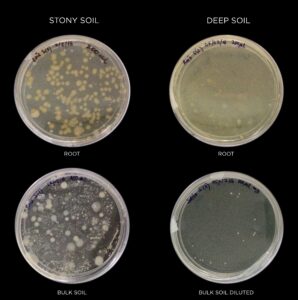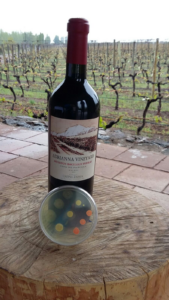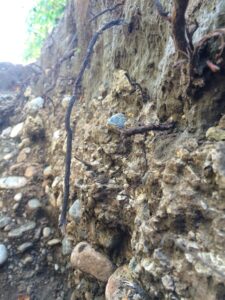Catena Zapata – Life Below the Surface: The Rhizosphere in Adrianna Vineyardate
COMPANY SUMMARY
Founded in 1902, Argentina’s Catena Zapata is known for its pioneering role in resurrecting the Malbec grape and in discovering extreme high-altitude terroirs in the Andean foothills of Mendoza. In 1995, Dr. Laura Catena founded the Catena Institute of Wine (CIW) with the goal of using science to understand the Mendoza terroir and to elevate Argentine wine on the world wine stage. The CIW has collaborated with key universities in the US and globally, publishing research in over 30 articles in major scientific wine journals and developed Argentina’s Sustainability Code instituted in 2011, currently governed by Bodegas de Argentina, which encompasses 250+ wineries across 9 Argentine provinces.
The winery’s Adrianna Vineyard holds six 100-point wine ratings. For more information about Catena Zapata, please visit www.catenazapata.com.
ABSTRACT
The soil is full of organisms that range from insects to arthropods to fungi to bacteria, and any real study of a vineyard should bear them in mind. One of the most interesting studies about what goes on below the soil is being conducted in Adrianna Vineyard by the Catena Institute of Wine (CIW), to explore specifically which bacterial strains are present in the soil and how these affect the growth of plants.
SUSTAINABLE TARGET
Soil fertility and biodiversity
PARTNERS
Catena Institute of Wine and IBAM (Institute of Agricultural Biology of Mendoza)
REASON WHY/ MOTIVATION
Bacteria living around the roots have proved to be quite important to the development and growth of plants. Some of these rhizobacteria play an important role in adapting the plants to the environment. A subset of them are known as plant growth-promoting rhizobacteria (PGPR): these grow around the roots and can also grow inside the root tissue (endophytic bacteria), and they stimulate the growth of their host plants. They can cause the plants to synthesize certain metabolites, so that when the plant is stressed it is better able to deal with it.
DESCRIPTION and STRATEGIES
The CIW in partnership with IBAM looked at the bacteria from soil pits in the Adrianna Vineyard, taking root and soil simples every 10 cm, to a depth of 80 cm. These were placed in sterile pots and taken to the laboratory, where the work of characterizing the various bacteria present began. After culturing and examining the isolated strains, DNA was analyzed to identify the species present.
ACHIEVEMENTS SO FAR
In all, eleven strains of soil bacteria were isolated, and these were from ten different genera. Of these, two were identified as having characteristics of plant growth-promoting rhizobacteria (PGPR). These were Bacillus licheniformis and Pseudomonas fluorescens, both of which produced the natural plant stress hormones abscisic acid (ABA), indole-3-acetic acid (IAA; an auxin) and the gibberellins A1 and A3.
We also colonized roots of Malbec grape vines grown in controlled conditions in pots. Vines that had these bacteria on their roots showed ABA levels that were increased 76-fold by B. licheniformis and 40-fold by P. fluorescens, when compared with controls. This is a massive increase: 76-fold means that 76 times more ABA was produced in the presence of B. licheniformis. These bacteria slowed down the rate of water loss in the vines, and this slowing of water loss correlated with increased ABA levels.
LESSONS LEARNED
Because the levels of ABA found were so high, researchers think this indicates that the increase is due to production by the bacteria plus production by the vine, as a response to the interaction with the microorganisms.
These bacteria slowed down the rate of water loss in the vines and this was found to correlate with increased ABA levels. Because the levels of ABA found were so high, researchers think that both the bacteria and the vine produced more ABA as a response to the interaction with the microorganisms.
The bacteria also increased the production of terpenes, which are associated with plant defense against microbial attacks. Interestingly, high levels of terpenes were found in the aerial part of the vine, whereas the bacteria were present only on the roots. This suggests that these bacteria are able to cause what is known as “induced systemic resistance” in vines given that, although they are located in roots, they stimulate synthesis of secondary metabolites (terpenes) that protect the whole plant.


 catbo
catbo

